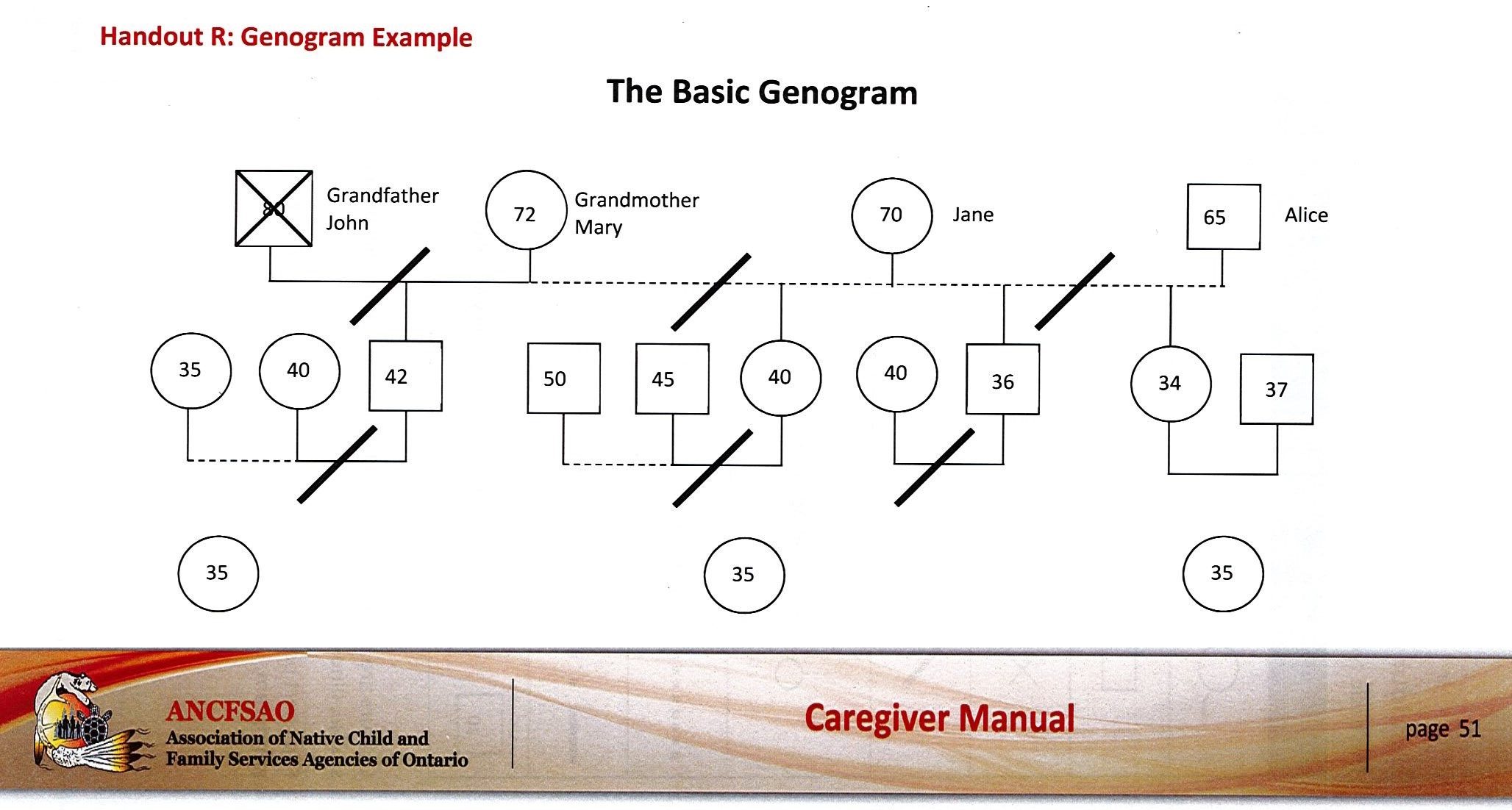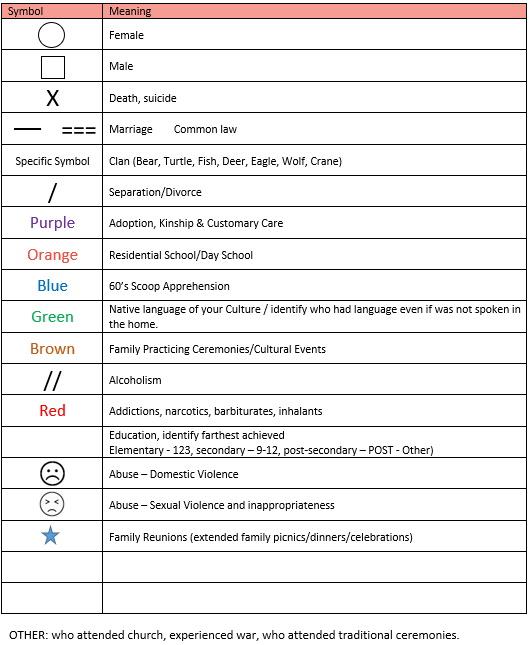6
Learning Objectives
We all have a birth story and the stories that follow. Understanding our roots, where we come from our personal “caring networks”. This activity assists to illustrate how one generation can have deep impacts to another.
Defining triggers and how that impacts a persons healing; and
Identifying family history with abuse, addictions, first language, cultural losses, customary care situations, residential school experiences, adopted out children.
Our Personal Stories
Purpose:
This personal activity is intended to assist you to illustrate how one generation can affect another. It is essential to understand family systems, and their “caring networks” when working with Indigenous communities. Completing a genogram of your family can help illustrate how one generation can deeply impact another. It is up to the participant how many generations to include, it is suggested to go back at least 3 (grandparents/great grandparents) or more if possible.
A Snapshot of Our Story with Mary Elliott Anishinabek Nation – Youtube
Genogram
Genogram Exercise
Facilitator’s Tip:
Stress the importance of knowing where you come from, what culture do you practice. What are your values and ethics that is practiced on a day to day basis?
Materials needed:
- Large Chart paper available for participants, helper pass one out to each participant
- Pencils, erasers, sharpeners, colored pencils and rulers, identify a central place for participants to retrieve what they need
- Allow participants to spread out to work on their stories
Review:
- A Spirit’s Journey Poster
- Values and Ethics Poster
- Human Needs Poster
Directions:
Using your own personal history and family connections, identify your ancestors highlighting your family adversities and successes. For some, this may be a very challenging exercise and it may be a trigger for others.
Triggers are anything that remind someone of previous trauma. To be triggered is to have an intense emotional or physical reaction, such as a panic attack, after encountering a trigger[1].
As a reflection exercise, pay special attention to:
- “What or where are your triggers?”
- “What do you do when you are triggered?”
These “activations” are signals. Your vessel and spirit are communicating that grief is there and it needs to be resolved.
If you feel this exercise may trigger you where you think you are unable to function, please do not continue. Time maybe arranged so that you can meet with an Ehkinoomaagejig (Traditional Knowledge Teacher), to help you.
Genogram Example

This table has a number of different categories that can be identified on your personal story. Feel free to adapt categories that works best for you. You will not be asked to share this information if you do not want to.
It is up to the participant how much detail they would like to make their personal genogram. It can be expanded by adding different colors and symbols to identify various health problems and abuses.
Genogram Activity
Feel free to be creative with what you research & track.
Reflection Circle
Facilitator Tips:
- Review Circle Protocol with group
- Creating Safe Space, review posted intentions that have been posted in the room.
- Evoke people to share about their “social location”, where they come from and where they are now.
Self Reflection
Invite people to share
- How did the Spirit’s Journey teaching resonate with you?
- Are there any personal stories from the afternoon exercises?
- Is there anything that resonated with you about the day?
Summary
Key Takeaways
- Recognize personal history and multi generational traumas.
- Recognize personal triggers.
Media Attributions
- ANCFSAO Genogram Example
- Genogram chart of symbols
- dictionary.com ↵
